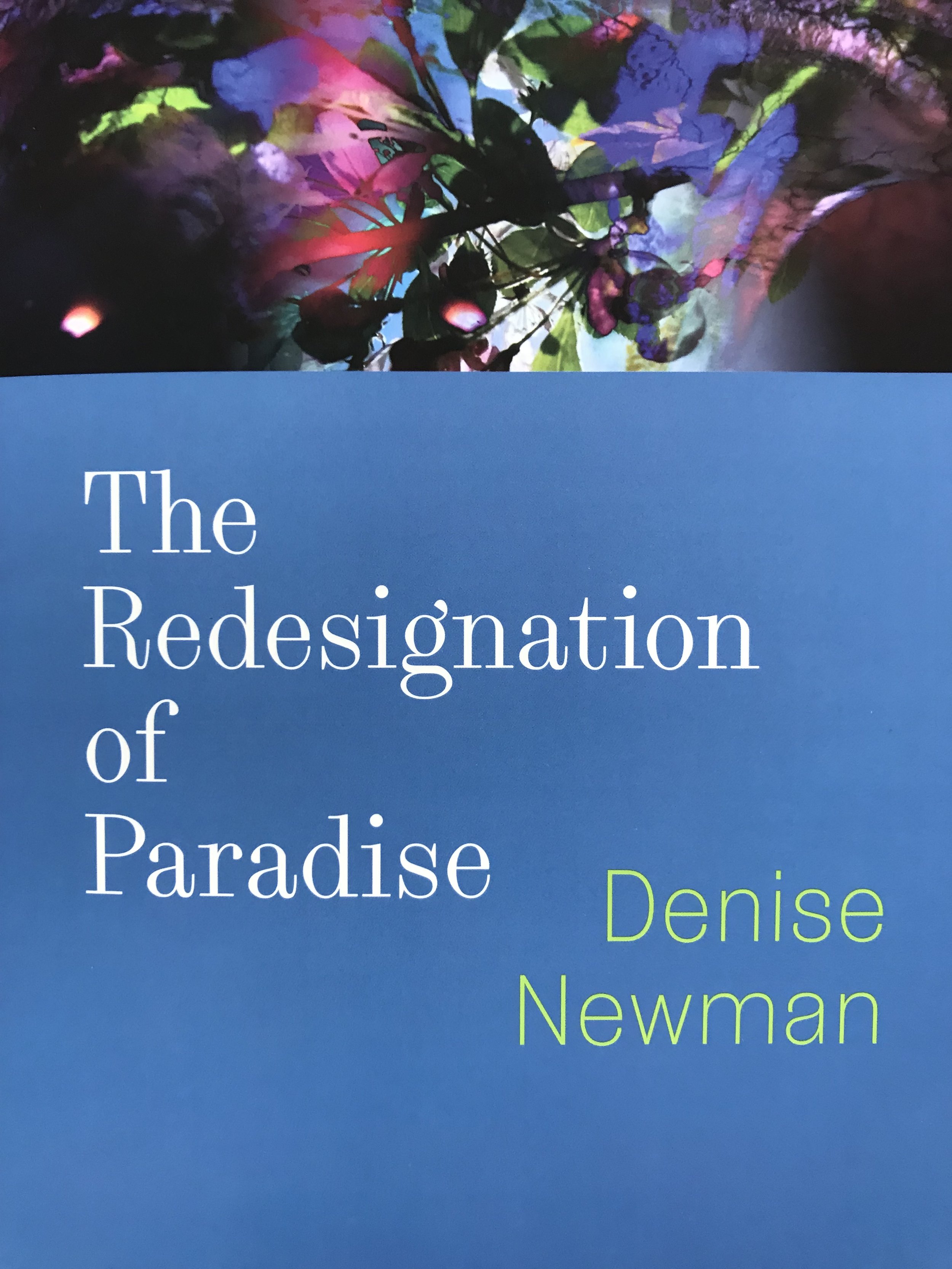POETRY COLLECTIONS
The Redesignation of Paradise (Kelsey Street Press)
Newman invites us to consider the ethics of our relations in that expansive space we call “nature,” the role of poetry in the face of “the beating rain of capital” and the shadows cast by war and climate change.”
—Brent Armendinger
Future People (Apogee Press)
…It's so hard to smash apart sentences and their logic without also ruining our commitment to old ethics, but here we have something like that, a new face, weird and unblemished. This collection is something wonderful.
—Fanny Howe
Wild Goods (Apogee Press)
Regarding Wild Goods: not, what does it mean, but what does it feel like, taste like, smell like to be a lone living being; to give, love, lose, and choose between the heart's dark woods and the "whole worthless sky." This is an interior venture, physically undertaken. A once-in-a-lifetime journey.
—C.D. Wright
The New Make Believe (The Post-Apollo Press: Contemporary Poetry Series #1)
…The New Make Believe witnesses Newman’s attempts to engage this silent partner of life through poetry, which seeks to converse, play, and dance with its subject, while avoiding the temptation to manage, control, or understand its mysteries.
—Norman Fischer
Human Forest (Apogee Press)
“…Newman’s lines are minimal in something huge.”
—Leslie Scalapino
“Reading Denise Newman is like imbibing a divine elixir, making one realize how thirsty one has been all this time. Perhaps even dead. Her work is intimate, erotic, pantheistic, metaphysical, then sprinkled with the odd grace and beauty of American colloquialisms…”
—Gillian Conoley
TRANSLATIONS
Tractatus Philosophico-Poeticus by Signe Gjessing (Lolli Editions, UK)
Translated from the Danish by Denise Newman
Following on from Wittgenstein 100 years later, Signe Gjessing updates and reimagines the Tractatus, marrying poetry with philosophy to test the boundaries of reality. Stunning, knowing, and revitalising, and glinting with stars, silk, and ecstasy, this is poetry which exacts the logical consequence of philosophy, while locating beauty and significance in the ‘nonsense’ of the world which Wittgenstein dismissed.
When Death Takes Something From You Give It Back: Carl’s Book by Naja Marie Aidt
Translated from the Danish by Denise Newman
Finalist for the 2019 Kirkus Prize in Nonfiction Longlisted for the 2019 National Book Award in Translated Literature Longlisted for the 2020 PEN Translation Award
In March 2015, Naja Marie Aidt’s twenty-five-year-old son, Carl, died in a tragic accident. This book chronicles the few first years after that devastating phone call. It is at once a sober account of life after losing a child and an exploration of the language of poetry, loss, and love.
Baboon by Naja Marie Aidt (Two Lines Press)
Translated from the Danish by Denise Newman
Winner of the 2015 PEN Translation Prize
Beginning in the middle of crisis, then accelerating through plots that grow stranger by the page, Naja Marie Aidt’s stories have a feel all their own. Though they are built around the common questions of sex, love, desire, and gender relations, Aidt pushes them into her own desperate, frantic realm. The first book from the widely lauded Aidt to reach the English language, Baboon delivers audacious writing that careens toward bizarre, yet utterly truthful, realizations.
Azorno (New Directions)
by Inger Christensen
Translated from the Danish by Denise Newman
Set in modern Europe, Azorno is a kind of logic puzzle or house of mirrors, concerning five women and two men. One of the men is a writer named Sampel, the other is the main character of his novel, Azorno. All the women are pregnant by Sampel, but which of them is really the narrator? Has someone been killed? Is someone insane? Is the whole story part of Sampel’s book, or Inger Christensen’s? Reminiscent of the works of Georges Perec and Alain Robbe-Grillet, Azorno illuminates the prevailing theme throughout Inger Christensen’s great body of poetry and fiction: the interplay of perception, language, and reality. As Anne Carson said, “Like Hesiod, Inger Christensen wants to give us an account of what is — of everything that is and how it is and what we are in the midst of.” Ending with the struggle between two merged characters, Azorno simultaneously satisfies and unsettles, leaving us with a view of reality unlike any other.
The Painted Room by Inger Christensen (The Harvill Press, UK)
Translated from the Danish by Denise Newman
The frescoed picture of the duke and his family on the walls of the Camera degli Sposi looks so peaceful -- you would never guess that a murder has just taken place. Prince Lodovico of Mantua invites the painter Mantegna to his palace to decorate one of the rooms. The painting is slowly completed and the prince's secretary records its progress in his gossip-laden diary. The story is then taken up by the prince's daughter, the dwarf Nana, whose story digs deeper into characters and motivations around the palace, and is quite forthright about deceits and vendettas, assassination and incest within its walls. It is completed by the painter's young son, Bernardino, who introduces a note of high fantasy into the narrative. What results is a beautiful yet startling picture of the Renaissance, as rich and colorful as the men and women depicted on the palace walls.









